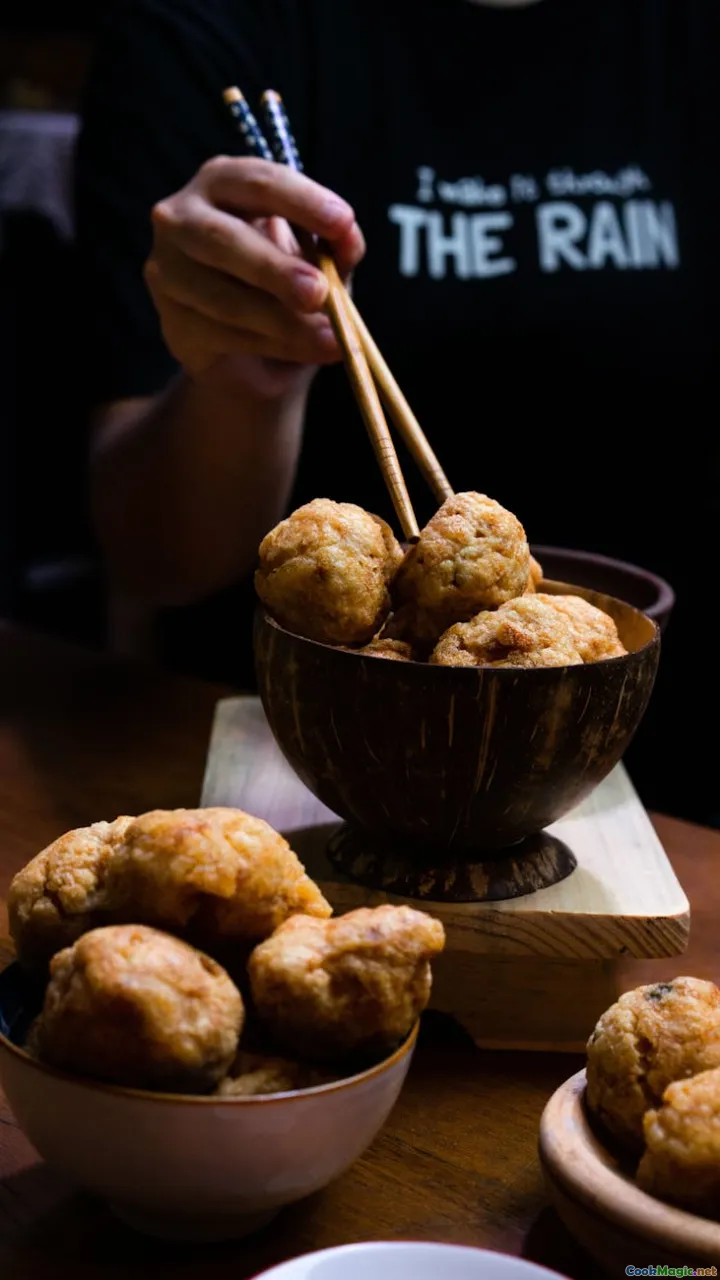Cooking with Coconut in Indonesian Dishes
8 min read Discover the rich role of coconut in Indonesian cooking, from creamy curries to fragrant desserts, and explore its cultural significance and flavors. April 23, 2025 23:55
Cooking with Coconut in Indonesian Dishes
Imagine walking through the lush, tropical landscapes of Indonesia, where the air is thick with the scent of spices and the rhythmic sound of gamelan music. Amidst this vibrant tapestry of culture and nature, coconut stands as a cornerstone of Indonesian cuisine—an ingredient as versatile as it is essential. From the creamy richness of coconut milk in curries to the toasted shredded coconut in sweet treats, this humble fruit weaves its way into the very fabric of Indonesian culinary identity.
The Heart of Indonesian Coconut Cuisine: A Cultural Perspective
Coconuts have been an integral part of Indonesian life for centuries. They are not just food but a symbol of fertility, prosperity, and community. In rural villages and bustling cities alike, coconut palms sway as a testament to the island nation's resourcefulness. The coconut tree provides nourishment, shelter, and livelihood, making it a true 'tree of life.'
Historically, Indonesian people have harnessed every part of the coconut. The milk, extracted from grated flesh, is the backbone of countless dishes, imparting a lush, velvety texture and a subtle sweetness. The meat, when toasted or shredded, adds depth and crunch. The oil, pressed from the kernel, is a vital cooking fat, while the water serves as a refreshing beverage.
The Culinary Magic: Techniques and Uses
1. Coconut Milk and Cream: The Soul of Curries and Soups
Indonesian dishes such as Rendang and Opor Ayam rely heavily on coconut milk. This ingredient is crafted through labor-intensive processes of grating and squeezing fresh coconut flesh, or more commonly today, using canned varieties for convenience.
The key to perfect coconut milk lies in its richness and balance. Too much thick cream can overpower a dish, while too little can leave it insipid. Chefs often simmer coconut milk gently, allowing it to meld with spices, releasing a fragrant aroma that envelops the senses.
Rendang, a slow-cooked beef stew from West Sumatra, exemplifies the use of coconut milk. The dish's velvety sauce, infused with turmeric, lemongrass, and chili, is a testament to the depth of flavor achievable through coconut's natural sweetness and richness.
2. Shredded Coconut: Texture and Sweetness
In Indonesian desserts like Klepon (sweet rice cake balls filled with palm sugar) or Kue Lapis (layered cake), shredded coconut provides a chewy texture and nutty flavor. Toasted shredded coconut, known as serundeng, adds a smoky crunch to rice dishes, salads, and snacks.
3. Coconut Oil: Cooking and Flavor Enhancement
Coconut oil, traditionally extracted through cold-pressing, is prized for its high smoke point and distinct aroma. It lends a tropical fragrance to fried foods, such as Pisang Goreng (fried bananas), and is used in stir-fries and baking.
4. Coconut Water: Refreshing and Functional
Coconut water is a popular beverage, especially in hot climates, offering hydration and natural electrolytes. It’s also incorporated into traditional drinks and desserts, adding a subtle sweetness.
Signature Indonesian Dishes Featuring Coconut
1. Rendang — The Quintessential Coconut Dish
Originating from Minangkabau in West Sumatra, Rendang is a slow-cooked meat dish where coconut milk is simmered with spices until it reduces into a fragrant, thick sauce. The process involves careful stirring and patience, resulting in tender meat infused with coconut’s sweet, nutty aroma.
2. Opor Ayam — Coconut Milk Chicken
A staple during Eid celebrations, Opor Ayam features chicken simmered in coconut milk, turmeric, and aromatic herbs. The dish’s creamy texture and vibrant yellow hue make it both visually appealing and irresistibly flavorful.
3. Sate Lilit — Coconut-Infused Minced Fish Skewers
From Bali, Sate Lilit uses a mixture of minced fish, grated coconut, and spices wrapped around bamboo sticks, then grilled to perfection. The shredded coconut adds moisture and a subtle sweetness, balancing the savory fish.
4. Klepon — Sweet Coconut Rice Balls
These chewy, bright green rice cakes are filled with palm sugar and coated in shredded coconut. The combination of sweet, sticky, and coconutty flavors creates an addictive treat loved across Indonesia.
Personal Reflections and Culinary Tips
Cooking with coconut is both an art and a science. I remember the first time I made Rendang, patiently simmering the coconut milk and spices until the oil seeped out, and the meat became tender and flavorful. The aroma alone was intoxicating—a warm, tropical embrace.
For home cooks eager to explore Indonesian coconut dishes, I recommend sourcing fresh coconut milk when possible. If using canned, choose brands that offer pure, unsweetened coconut milk without additives for a more authentic flavor.
Toast shredded coconut in a dry skillet over medium heat until golden brown, then sprinkle over rice or salads for a burst of flavor and crunch. When making coconut-based desserts, balance sweetness and richness carefully to avoid overwhelming the palate.
The Cultural Significance of Coconut in Modern Indonesia
Today, coconut remains a symbol of Indonesia’s rich heritage and resilience. It’s celebrated in festivals, markets, and culinary traditions that connect generations. The versatility of coconut—its ability to adapt from savory to sweet, from beverage to condiment—mirrors Indonesia’s diverse and dynamic culture.
In conclusion, cooking with coconut in Indonesian dishes is an immersion into a world of flavor, history, and tradition. It’s a celebration of nature’s bounty and a testament to the ingenuity of Indonesian cooks who have perfected these recipes over centuries. Whether you’re savoring a bowl ofOpor on a festive occasion or enjoying a simple coconut pancake, remember that each bite carries the stories of islands, seas, and a people united by their love of this extraordinary fruit.Embark on your culinary journey with coconut—let its aroma and richness bring a slice of Indonesia into your kitchen.









